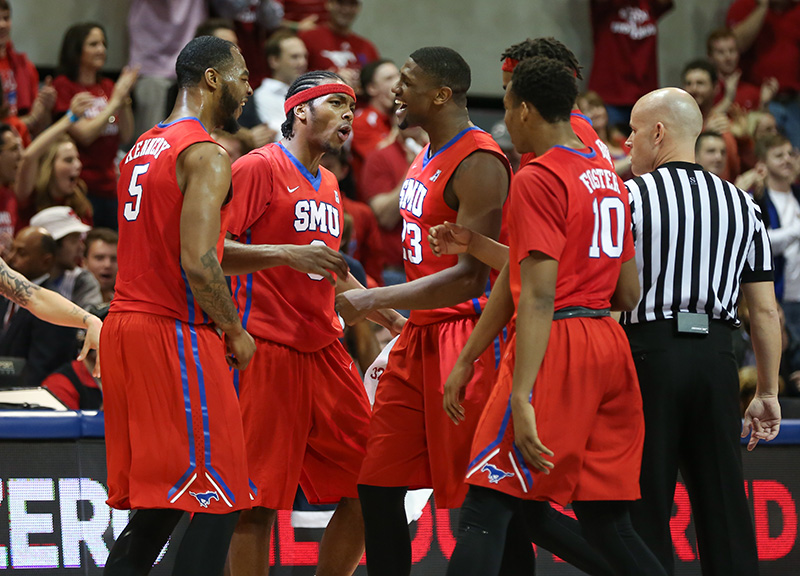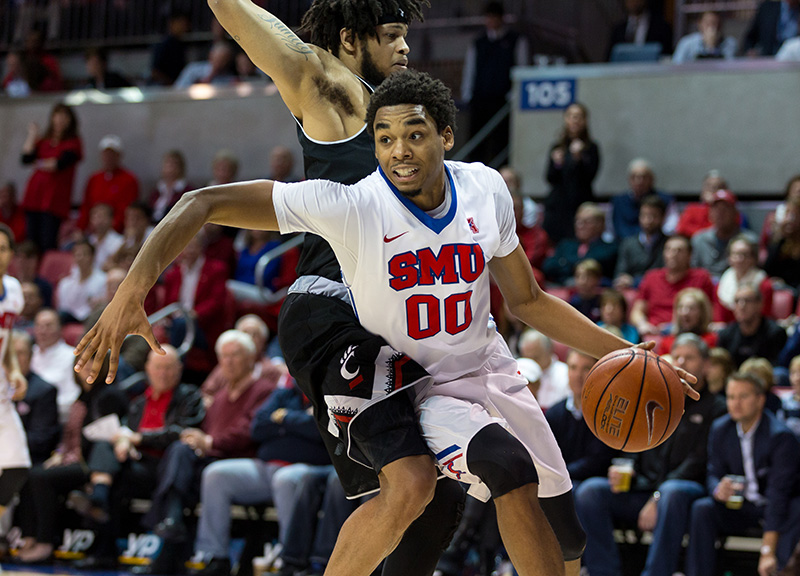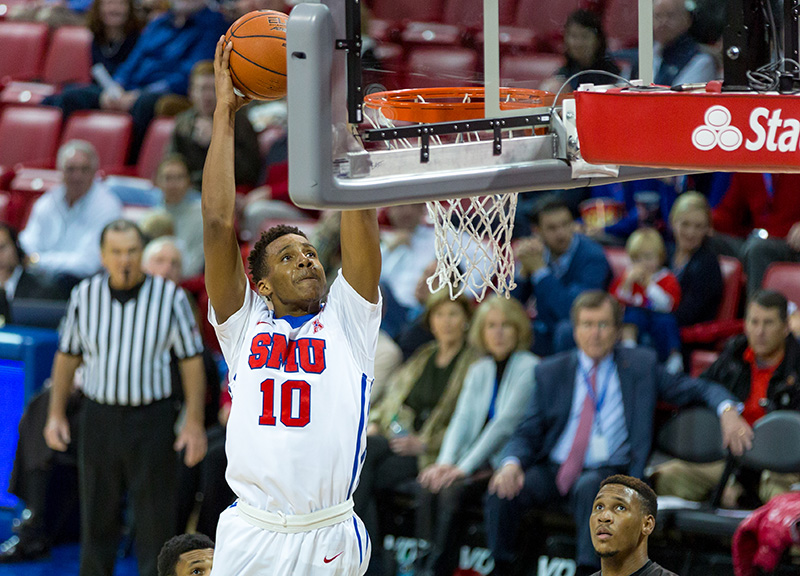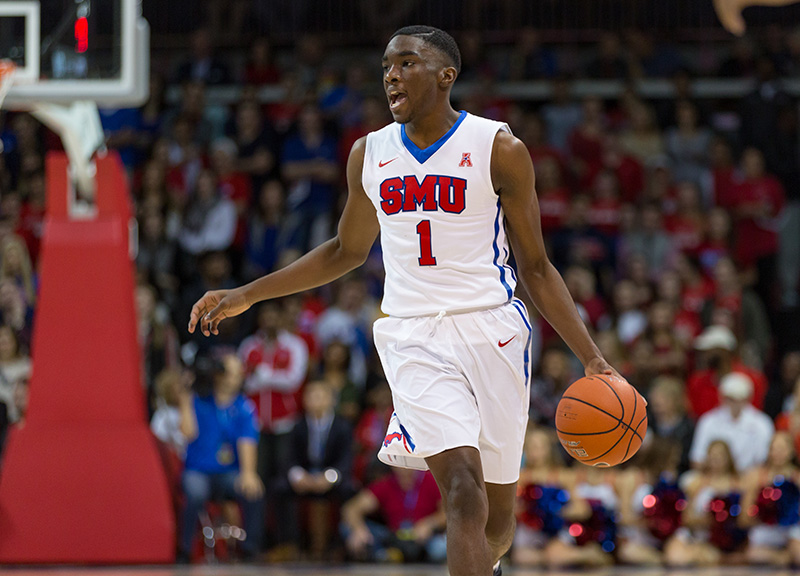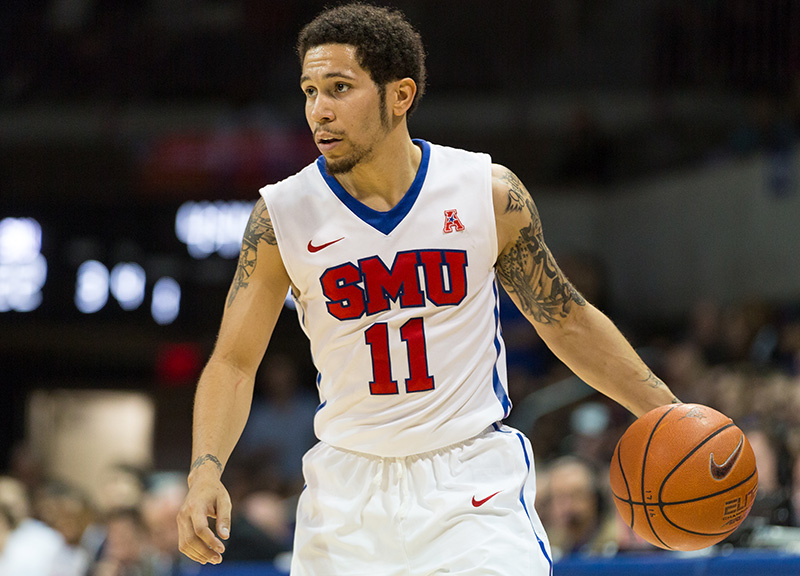How Far Could This Year’s SMU Mustangs Have Gone In The NCAA Tournament?
March Madness is an exciting time for pretty much all college basketball fans out there. But we couldn’t blame SMU Mustangs fans for watching each round of the 2016 NCAA Tournament with a little contempt in their hearts as they measure each victor against their precious, banished ponies.
Why not? Honestly, because we’ve been doing it ourselves.
Sure, doing so is a frustrating exercise in futility — but because of the way the Mustangs stood tall in the wake of their postseason ban and put together a rather remarkable 25-5 record that was good enough to have the team finish the season ranked 24th in the year’s final AP Poll, wondering how the Mustangs might’ve fared in this year’s Field of 68 also feels like an oh-so-necessary task.
So let’s get into it and wonder aloud through point-by-point consideration if the Mustangs would still be dancing if they were eligible to do so this year.
Question: Where would SMU have been seeded if they’d been invited to the tourney?
First of all, would they even have been invited at all? This may seem like an odd thought for a team that a) was at one point the last unbeaten team in the country, and b) that finished the season ranked. But the selection committee has shown in recent times that it’s no fan of the Mustangs. That much is evident from the Mustangs’ omission from the tourney in the 2013-14 season after going 23-8 in a regular season that saw multiple appearances in the top 25 in addition to two victories over the eventual national champion UConn Huskies. Then, in 2015, with an even better record and even a conference championship, the Mustangs were still only able to pull a 10 seed from the stingy committee.
Taking all that into consideration, if this team had been eligible to play for its championship this season and, for arguments sake, won it, it’s likely that the best position the NCAA may have offered SMU would’ve been a 5 or 6 seed. Meanwhile, if the Mustangs had just tanked in the conference tourney, we can reasonably assume that an invite would’ve come, but that a 10 seed would be in play. After all: This year’s actual American Athletic Conference Champion, UConn, only earned a 9 seed — and the NCAA committee loves them.
Furthermore, a 9 or 10 seed is also in the range of SMU’s nine regular season opponents who made the tournament. Our best guess is that the ponies would’ve indeed made the tournament and been seeded somewhere between a 6 and a 9.
Question: How would SMU have fared in the chaotic early rounds?
Outside of Hampton, a 16 seed and a team SMU destroyed 105-72, all of SMU’s regular season opponents that made it into the playoff earned between an 8 and a 12 seed — right around where we’re putting the Mustangs ourselves. Only three of those teams advanced to the next round (Yale, UConn and Gonzaga), with only Gonzaga making it to the Sweet 16.
In our thought experiment, Gonzaga makes for a great case study for SMU’s prospects, as it’s a team SMU parallels in many regards. First, they shared a similar regular season record; second, they both come from a “mid-major” conference; and, third, Gonzaga head coach Mark Few, who essentially built his program into a national power from scratch, is one of a handful of NCAA coaches who commands the kind of outside respect that SMU coach Larry Brown does. Their regular season match-up was a closely contested game that SMU managed to eek out of with a 69-60 win. It’s not unreasonable to think that, like the Zags, this Mustangs team too could’ve played its way into the Sweet 16, acting as an only-somewhat-surprising spoiler on the way.
Question: Could this SMU team have been a Syracuse-like Cinderella?
Honestly, asking for more than a Sweet 16 finish feels a bit like a reach. Anything beyond that and we’re flirting with the Peter Principle. And yet the one distinction that the Mustangs hold over a lot of the quality teams in this year’s tournament is that they rarely get caught up playing the stereotypically “ugly” college basketball that casual fans love to mention when deriding the game. SMU’s efficient, fundamental style of play earns this squad at least some argument of going farther than the Sweet 16.
It’s possible, we suppose, they could’ve found themselves playing Syracuse’s role. Syracuse is the first 10 seed to ever reach the Final Four, and its team is enjoying exactly the kind of run that SMU fans would see in their alternate reality fantasies. The hot hand Syracuse is playing with is just what the Mustangs would’ve needed to put together for a run.
These teams have some noteworthy similarities, too. Syracuse has played most of this tournament on a seven-man rotation, which is exactly the same number SMU employed as its season game to its close. Both teams are also extremely athletic. And they’re both helmed by Hall of Fame coaches who had to sit out nine-game suspensions this year.
But before we actually try to suggest that the Mustangs could dream of having the Cinderella-like run the Orange are enjoying right now, it’s important to remember that, as a member of the far more competitive ACC, Syracuse’s resume was likely deflated some. Also worth keeping in mind: The Orange’s famed 2-3 defensive zone creates a whole bunch of strategic problems for the opponents it meets on short prep times.
So although these things really can’t be predicted — you’d be hard-pressed to find a reasonable Syracuse fan who legitimately thought this year’s 19-13 team had a shot at the Final Four — we’re thinking the odds weren’t in SMU’s favor for something like this to go down.
Question: What can SMU fans take away from Syracuse’s run?
Syracuse does actually offer one more reason for fantastical thinking in regards to SMU: Last year, facing impending NCAA sanctions, the Orange self-imposed a postseason ban onto its squad.
It’s safe to say that, at least on some levels, this year’s Orange team is in turn motivated more than ever to make a run like the one they’re on. And so it seems reasonable that next year’s SMU squad could feel the same make-up-for-lost-time fire next year.
Sure, that team will be without Nic Moore, Markus Kennedy and Jordan Tolbert, but it’s returning plenty of young, promising talent. That trio’s graduation, while sad, doesn’t sound the program’s death knell in the slightest.
Question: Is Syracuse really the only fair Final Four comparison for SMU?
The short answer: Yes.
Just in case there are SMU fans out there who still think this year’s team could’ve won it all, the harsh reality is that the Mustangs just don’t compare to the rest of the remaining teams in the tournament.
Oklahoma has a player in Buddy Hield who is just playing lights out and has put his team on his back this tourney; it’d be nice to pretend that Nic Moore could do the same for the Mustangs, but in his team’s biggest stage, Hield racked up 37 points and sunk eight three-pointers, which is 10 points greater and two more threes than anything close to Moore’s best game this season. Villanova, meanwhile, boasts one of the best defenses in the country — one that the Mustangs couldn’t come close to matching. And North Carolina has a bench deeper than even what Larry Brown and the Mustangs could dream of ever boasting.
Fact is, the Mustangs, whose tired legs were already started to shake as the season dragged on, just aren’t built for the endurance that’s generally needed in the tournament. Adrenaline maybe could’ve lifted SMU as far as the tournament’s second weekend, but not to a third.
Question: So this team we’ve been touting all year wouldn’t have made it past the Sweet 16?
Yeah, you could say we’re saying that — if you wanna be a dick about it.
But the promise of What Could’ve Been isn’t what made the 2015-2016 Mustangs so fun to follow. As we’ve repeatedly expressed over the course of this Lost Season, what’s made this team so enjoyable a follow is what they accomplished — a second-place regular season conference finish, a 25-5 overall record and a heartwarming send-off for the seniors who helped establish the program — in the face of knowing well What Couldn’t Have Been.
Seasons like this one — stretches filled with plenty of ups but more guaranteed downs in the end — are frustrating on a lot of levels, no doubt. But it’s the trying seasons that build up the mettle of a program and its fan base. And this was a program that, in spite of everything, only continued this year to establish itself as one of the hottest tickets in town.
How SMU would’ve finished this year — and, for the record, we’re confident in our supposing that they would’ve been a Sweet 16 team — isn’t really the point.
Mostly, we’re looking forward to seeing where they go now that this season’s passed. And, more than that, seeing this team have seasons where they finish, real or imagined, past the Sweet 16.
